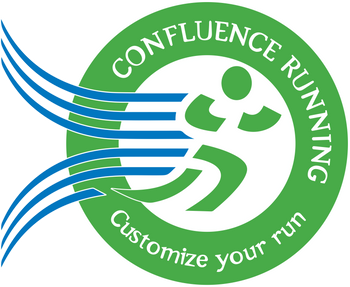Breath Control & Stroke Efficiency: A Fins-Based Swim Workout
Triathlon & Intermediate Swim Training: Mastering Stroke Control & Breath Efficiency with Fins
When it comes to triathlon swim training, efficiency is everything. Endurance athletes must balance power, technique, and breath control to optimize performance over long distances. This fins-enhanced swim workout is designed to refine breath control, improve stroke efficiency, and develop better muscle endurance—all crucial for triathletes preparing for race day.
Why Use Fins in Swim Training?
Fins provide several benefits when integrated into structured training, including:
✅ Improved Ankle Flexibility – Helps create a more efficient kick for freestyle and butterfly.
✅ Enhanced Propulsion – Builds swim speed and power while reinforcing good form.
✅ Reduced Fatigue on Arms – Allows focus on stroke mechanics while reducing upper-body strain.
✅ Better Stroke Timing & Coordination – Encourages fluid, streamlined movement for efficiency.

Workout Breakdown: A Detailed Look at Each Set
1️⃣ Warmup (No Fins) - Activating the Body
25 Start + 200 IM (Swim/Kick Alternate)
The warmup kicks off with a 25-yard start, simulating a race scenario where swimmers get used to diving or pushing off powerfully from the wall.
The 200-yard Individual Medley (IM) alternates between swimming and kicking drills in each stroke—butterfly, backstroke, breaststroke, and freestyle. This ensures all major muscle groups are activated and prepares the body for efficient movement through the water.
💡 Why It Matters: IM work ensures well-rounded skill development, flexibility, and endurance across multiple strokes.
2️⃣ Pre-Set (No Fins) - Speed & Stroke Transitions
4x25 Fast IM Order on 70s
This set builds quickness and adaptability. Each 25-yard sprint focuses on one stroke in the IM order:
- 🦋 Butterfly – Emphasizing a strong kick and powerful arm pulls.
- 🏊♂️ Backstroke – Maintaining a steady rhythm and keeping hips high.
- 🐸 Breaststroke – Executing a long glide and controlled breathing.
- 🏁 Freestyle – Focusing on reducing stroke count while increasing speed.
💡 Why It Matters: Short, high-intensity bursts reinforce race-speed mechanics while ensuring smooth transitions between strokes.

3️⃣ Drill Set 1 – Breath Control (With Fins)
5x50 Freestyle – 3 to 7 Strokes Per Breath
In this progressive breathing drill, swimmers start with three strokes per breath on the first 50 yards, then increase by one stroke every 50 yards until they reach seven strokes per breath.
This forces swimmers to regulate their exhalation, strengthen their lungs, and maintain a steady head position while swimming.
💡 Why It Matters: Triathletes often face chaotic race starts, where controlling breathing patterns is critical to avoiding panic and ensuring efficient oxygen use.
4️⃣ Drill Set 2 – Stroke Control (With & Without Fins)
This set is all about reducing stroke count per length of the pool, often referred to as the "Golf" method—minimizing strokes while maximizing distance per stroke.
- 4x25 Butterfly (50 yards w/ fins, 50 yards w/o) – Using fins allows for a stronger dolphin kick, reinforcing good rhythm.
- 4x25 Backstroke (50 yards w/ fins, 50 yards w/o) – Helps maintain a steady kick while reducing excessive arm movement.
- 2x25 Breaststroke (No Fins) – Since fins aren’t allowed in breaststroke, swimmers focus on an efficient glide phase to reduce drag.
- 4x25 Freestyle (50 yards w/ fins, 50 yards w/o) – Teaches proper streamlining and efficient pull mechanics.
💡 Why It Matters: This set helps swimmers maximize efficiency by improving stroke mechanics and minimizing wasted energy.
5️⃣ Repeat Drill Set 1 & 2
Repeating these drills reinforces consistency and endurance, helping swimmers retain good technique even when fatigued.
Key Takeaways & Race Application
✅ Breath Control Training ensures triathletes can sustain long swims without gasping for air.
✅ Stroke Efficiency drills reduce energy expenditure, crucial for saving strength for cycling and running.
✅ Fin-Assisted Training builds power, improves ankle flexibility, and increases race-day confidence.
This structured workout is an essential addition to any triathlete’s swim routine, preparing them for the unique challenges of open-water racing. Whether you’re a beginner working on breath control or an advanced swimmer refining stroke mechanics, this session helps develop speed, endurance, and technique—the ultimate trio for success in triathlon swimming!
Looking for More? Check Out These Articles:
📌 Mastering Open Water Swim Starts & Efficiency
📌 Strength Training for Triathletes backstroke drills
📌 How to Improve Swim Technique for Triathlon
💦 Train Smart, Swim Strong! 💦

Learn to Swim: Stroke and Breath Control Workout
Developing Fundamental Breathing & Stroke Techniques
Breath control and stroke efficiency are key components in becoming a confident swimmer. This Learn to Swim workout is designed to help swimmers practice breath timing, controlled exhalation, and stroke mechanics while using a combination of drills and flippers for added support. The goal is to enhance coordination between breathing and movement while improving endurance in the water.
Warmup: Activating Breath Control & Kick Efficiency
Before diving into focused drills, the warmup primes the body with controlled breathing exercises and foundational kicking. These movements reinforce the importance of exhaling underwater and generating propulsion efficiently.
- 20x Burpee Bubbles – Engages breath control through continuous submersion and exhalation.
- 50 Dolphin Kick – Strengthens the core and improves rhythmic breathing for butterfly and freestyle.
- 50 Flutter Kick – Develops lower-body endurance and balance.
- 50 Dolphin Dive – Teaches smooth water entry and body alignment for better streamline.
- Repeat the set for a complete warmup.
Pre-Set: Fast Kick Intervals for Breath Awareness
Short, high-intensity kicking intervals challenge swimmers to maintain consistent breathing patterns while generating maximum propulsion.
- 4x15s Kick Fast w/ 15s rest
- With each repetition, the focus is on exhaling into the water while maintaining a strong, steady kick.
Drill Set: Strengthening Breath Control & Stroke Mechanics
Using fins during this drill set allows swimmers to practice efficient breath timing and body alignment with added propulsion.
- 50 Side Kick – Encourages proper head positioning and breath control while maintaining streamline.
- 50 Stroke with Board – Helps swimmers isolate arm movements while stabilizing their breathing rhythm.
- 50 Pull (w/ Pull Buoy) – Develops upper body endurance while minimizing lower body engagement, forcing better stroke timing.
- 2x25 Swim – Integrates all previous drills into full-stroke swimming.
- 2x 3-Stroke Breath Drill – Focuses on gradually increasing the number of strokes per breath, improving lung capacity and control.
- Repeat this sequence 4x for full mastery.
Main Set: Building Confidence Without Equipment
After extensive work with drills and fins, swimmers remove all equipment to execute smooth, efficient strokes while maintaining the breath control they've developed.
- 2x25 Swim without equipment
- This final set reinforces proper technique, streamline, and breath control in a natural swim setting.
This workout helps swimmers build confidence in their strokes while refining breath control, leading to greater efficiency and endurance in the water. Whether training for triathlons or simply improving technique, these drills create a strong foundation for future swim progress.
Let me know if you’d like any modifications or additional details! 🚀
Tags for Triathlon Breath Control and Stroke Control Workout
triathlon swim training, swim workout with fins, freestyle stroke drills, breath control in swimming, swim drills for endurance, swimming efficiency, stroke control training, backstroke drills, butterfly technique, triathlon swim technique, best swim drills for triathletes, training with swim fins, improving swimming technique, breath-holding drills, swimming stroke efficiency, swim kick technique, open water swim training, swim training tips, competitive swim workouts, streamlined swimming



